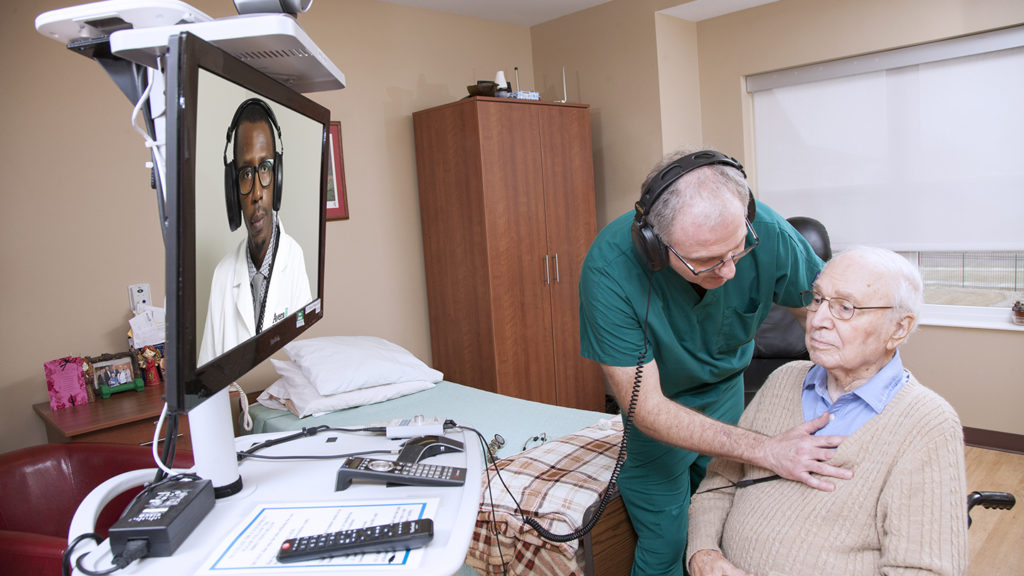
A telemedicine partnership is helping one senior living provider treat residents in place and reduce staff member burnout.
After piloting a telemedicine program in a few locations, Aberdeen, SD-based Primrose Retirement Communities has integrated telemedicine services in more than two-thirds of its assisted living and memory care communities.
Today, 23 Primrose communities are live with Sioux Falls, SD-based Avel eCare’s telemedicine services, with 13 waiting to activate the program. The services connect Primrose nurses, primary care providers and staff members to Avel eCare’s telemedicine experts 24/7.
“By expanding this partnership with Avel, Primrose is better able to focus on supporting our staff, decreasing unnecessary transfers, and keep a laser focus on quality outcomes,” Primrose Executive Director of Nursing Dedi Wood said. “The Avel eCare team not only enables us to handle more complex medical conditions on site; they also help our nurses and [primary care providers] by alleviating stress and burnout.”
Using a two-way video mobile unit, the Avel team can conduct on-site falls assessments, consult on acute condition changes, review test results, answer medication questions and manage behavioral health issues.
The Avel equipment comes on a cart, enabling Primrose staff members to bring the service directly to the resident, according to Avel eCare Vice President and General Manager of Senior Care Services Joshua Hofmeyer. The cart includes an iPad screen, peripheral devices and software. Most communities have one mobile cart, although larger communities with high census counts may have additional carts.
As the partnership expanded, so did use. In March, Primrose staff members engaged Avel’s services in 442 encounters, with 96.4% resulting in the resident being treated in place, according to the organization. And although the program first was implemented just before the pandemic, Primrose Director of Operations Dylan Kessler said that COVID-19 definitely drove utilization.
“In late 2020 when the first surge occurred, we couldn’t always send residents out,” Kessler said. “There are residents whose lives were saved because we were able to get collaborative support through Avel eCare.”
Approximately 1,200 Primrose residents are eligible to receive services under the provider’s contract, which includes residents in assisted living and memory care units. Primrose pays a monthly fee for the service but chose not to pass the cost on to residents.
Kessler said the senior living company saw telemedicine as the future even before the pandemic.
“We could see a staffing shortage coming on the horizon,” he said, adding that resident and family needs and expectations change, and healthcare was changing as well. “We knew we had to come up with a better solution for staffing before the pandemic-associated staffing crisis. It’s more important than ever to have creative, outside-the-box solutions to support staff and provide help for resident care.”
Kessler said the partnership with Avel is more than just a vendor relationship. He said Primrose wanted to ensure they had the right resources and infrastructure in place to make it successful.
“Going into this, I expected this to be more of a typical telehealth program,” he said. “I was surprised that it’s not. It is very much viewed as a member of our care staff.
“That’s a unique setup with telehealth today, because it enables us to do exactly what our mission is: to provide a good, person-centered care environment for our residents.”
Kessler said that the Avel partnership is unique in that it is not trying to assume a long-term primary physician relationship with residents. Avel care team members work with a resident’s doctor to supplement care.
The partnership also benefits Primrose staff members by offering them the ability to take time off, he said. The availability of Avel shifted the organization’s thinking about staffing, because internal teams could use the system as a nurse-on-call. The system, they said, saves time, prevents staff burnout and allows Primrose to get more creative with its staffing structure.
“When leaders are out of the building, they can truly turn off, because Avel can handle the vast majority of situations for them,” Kessler said. “It’s almost just like a second opinion.”


